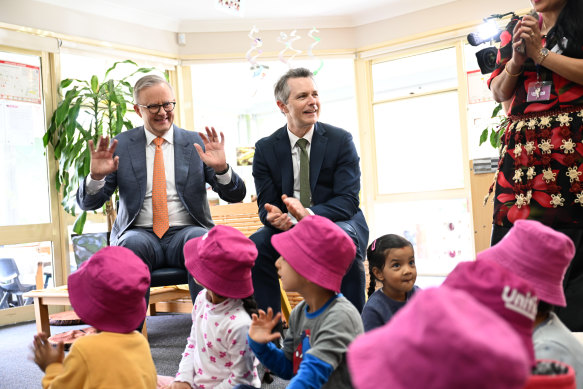‘Unsustainable’: Struggling student teachers plead for paid teaching rounds

Save articles for later
Add articles to your saved list and come back to them any time.
Final-year teaching student Molly loves working in schools but is not sure if she can afford to finish her degree.
Molly usually stays afloat by waitressing 20 hours a week and careful spending. But four weeks into her unpaid teaching rounds, the 23-year-old finds herself in financial stress.
Teaching students are asking for paid placements.Credit: File photo
As the state calls for more teachers and the cost of living soars, Molly is part of a growing number of teaching students struggling with the demands of lengthy unpaid placements.
A petition from the Australian Education Union, calling on the Victorian government to pay teaching students for compulsory placements, has attracted close to 5300 signatures. Teaching students in post-grad courses are required to do 60 days of unpaid teaching rounds. For undergraduate courses, it’s 80 days.
Molly said she was feeling the pinch from not working during her time-intensive placements. “I’m renting alone. I was able to save up some money over the semester break to budget for rent, but cannot afford an internet plan,” she said.
“I had applied for financial hardship grants at the beginning of the semester through the university but was ineligible due to the number of applications received. There are waiting lists for food relief.”
A review of teaching degrees has suggested an “internship model” for master’s students where they are paid for part of the placements, to shorten the time mid-career entrants are not in employment. The panel’s final report is due in coming weeks.
Molly, who declined to use her last name, said financial stress had prompted some of her peers at the University of Melbourne’s two-year Master of Teaching (Primary) course to drop out.
“We began [in 2022] as a cohort of over 100 students, and we currently have just under 40 students enrolled,” she said.
This week, about half of the course asked the University of Melbourne’s Graduate School of Education to reduce their number of teaching hours or remove requirements for record-keeping and documentation.
The school declined, noting students were expected to “determine their capacity to meet the course requirements including placement before accepting an offer to the course”.
The students said during placements they were required to teach classes and do between 25 and 40 hours of planning, preparation, record-keeping and assessment documentation each week, creating a significant risk to their health and safety.
Molly said she was writing between 6000 and 10,000 words a day during her current placement. “I feel confident that I can get it done, but not by the timeframe they expect. I am behind currently, but everyone is. It’s completely unsustainable.”
A University of Melbourne spokesperson said it could not change the requirements of placement hours or documentation, as these were external requirements.
Australian National University higher education expert Andrew Norton said the argument against schools paying pre-service teachers for placements was that, unlike apprentices, student teachers were not doing economically valuable work in addition to their training.
“But if students are not enrolling in teaching courses because of this problem, or not finishing the courses they start, then there may be a case for paying for them,” he said.
“Policymakers would, however, be wary of setting a precedent. Nursing students do 800 hours of clinical training, and most students these days do at least some work-integrated learning.”
The Victorian government has invested millions into stemming the shortage, including recruiting overseas teachers, financial incentives for hard-to-staff positions, fast-tracking pathways to teaching from other professions and retraining teachers as specialists.
Prime Minister Anthony Albanese and Education Minister Jason Clare visit an early learning centre.Credit: Janie Barrett
But The Age’s Schools Summit heard in March an estimated 15 per cent of available places in teaching courses at Australian universities were unfilled, as school-leavers steered clear of a vocation they perceive as inflexible and poorly paid.
In 2019, just 51 per cent of undergraduates undertaking teaching degrees finished their courses. Of teaching undergraduates who were contemplating dropping out, a third nominated the need to do paid work as a factor.
And the number of people gaining a postgraduate qualification in education has declined since states and territories phased out the one-year diploma in 2014.
The Morning Edition newsletter is our guide to the day’s most important and interesting stories, analysis and insights. Sign up here.
Most Viewed in National
From our partners
Source: Read Full Article

